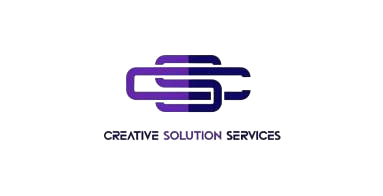Definition of Web Development
Web development is the process of creating and maintaining a webpage or web application. It involves the code made to design and construct a website or web application to ensure usability, business functions, and a great user interface. Web Development is segmented into three different categories:- Front-End Development – This is where the visuals input by the users on the website come to life.
- Back-End Development – It includes server side, databases, and application logic.
- Full Stack Development – This is redundancy where both the visual and the backend components are engaged to create a complete web development solution.
Critical Tools For Web Developers
Proficient web developers need to make use of certain technologies to gain efficiency:- HTML – Hypertext Markup Language HTML is the most basic building block of website development as it provides the skeleton structure or layout of the site.
- CSS – Cascading Style Sheets Through the use of colors, layouts, and animations, CSS is used to style web pages and make them aesthetically pleasing.
- JavaScript The programming language JavaScript makes it possible for dynamic and interactive web features like pop-ups, sliders, and form validations.
- Libraries and Frameworks
- Front-end: Angular, Vue.js, and React
- Back-end: Django, Ruby on Rails, and Node.js
- Information Systems For web applications to store and handle data, databases are necessary. Typical databases are PostgreSQL, MongoDB, and MySQL.
- Systems of Version Control Developers can work together, track changes, and maintain code more effectively with the aid of Git and GitHub.
Process of Web Development
- Research & Planning Being aware of the website’s intent, target market, and essential features.
- Website Design To conceptualize the layout and user experience, wireframes and mockups are created.
- Development The process of turning designs into a fully functional website using code.
- Testing & Quality Assurance Identifying and fixing bugs, checking performance, and ensuring cross-browser compatibility.
- Deployment To make the website available online, it is published on a server.
- Upkeep and Upgrades The website will receive regular upgrades, security improvements, and bug fixes to maintain optimal functionality.
Career Options in Web Development
Web development offers several career pathways, each with its own set of opportunities:- Front-end Developer Uses HTML, CSS, and JavaScript to create the visual components of a website.
- Back-end Developer Works with databases, application logic, and server-side programming with tools like Node.js, PHP, and Python.
- Full-Stack Developer Is capable of managing every facet of a web application and possesses both front-end and back-end programming skills.
- UI/UX Designer Emphasizes web application design and user experience to create a user-friendly and captivating interface.
- DevOps Engineer Oversees deployment, automation, and infrastructure to guarantee seamless website operation.
Web Development Trends
- Progressive Web Apps (PWAs) PWAs provide lag-free, app-like online experiences, even when offline.
- Chatbots and Artificial Intelligence AI-driven chatbots automate responses and enhance customer service.
- Voice Search Optimization With the growing popularity of voice assistants, websites are optimizing for voice search.
- Serverless Architecture Developers can create apps using serverless computing, which lowers operating expenses by eliminating the need to manage servers.
- Blockchain and Web 3.0 Integration Secure, transparent online applications of the future are being shaped by blockchain technology and decentralized apps (dApps).
The Best Way to Begin Web Development
If web programming is new to you, here’s a step-by-step guide to get you started:- Get the Fundamentals Right Start with HTML, CSS, and JavaScript to learn the basics of web development.
- Practice via Construction Projects Develop modest projects to obtain practical experience, such as blogs, landing pages, and personal portfolios.
- Examine Frameworks and Libraries Gain knowledge of back-end technologies like Node.js and front-end frameworks like React.
- Acquaint yourself with GitHub and Git Tracking code changes and working with others requires version control.
- Work on Practical Assignments Participate in freelance work, interning, or open-source projects to obtain real-world experience.
- Continue to Learn and Keep Up to Date Since web development is always changing, stay up to date with emerging trends and technology.
In Conclusion
The field of web development is constantly changing and continues to influence the internet. Learning web programming can lead to countless chances for anyone, regardless of experience level. Practice coding, keep up with the current trends, and work on projects to hone your abilities. If your company needs a professional website, working with a skilled web developer can guarantee that the final product is both high-quality and optimized for performance.Do you want to create a website of your own? Please share your thoughts in the comments section or contact us for expert web development services!



